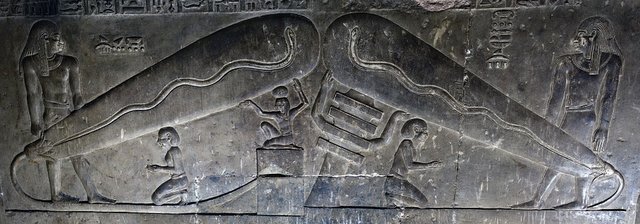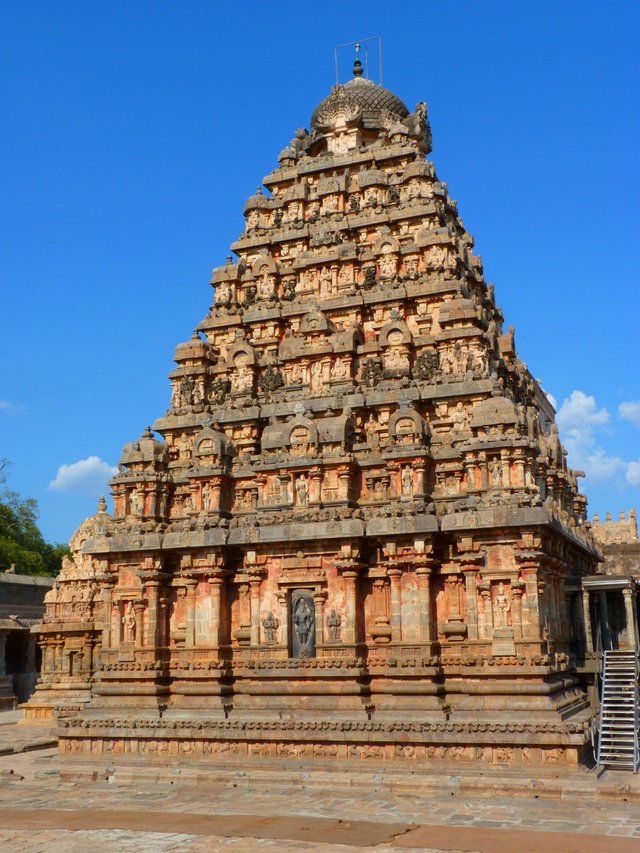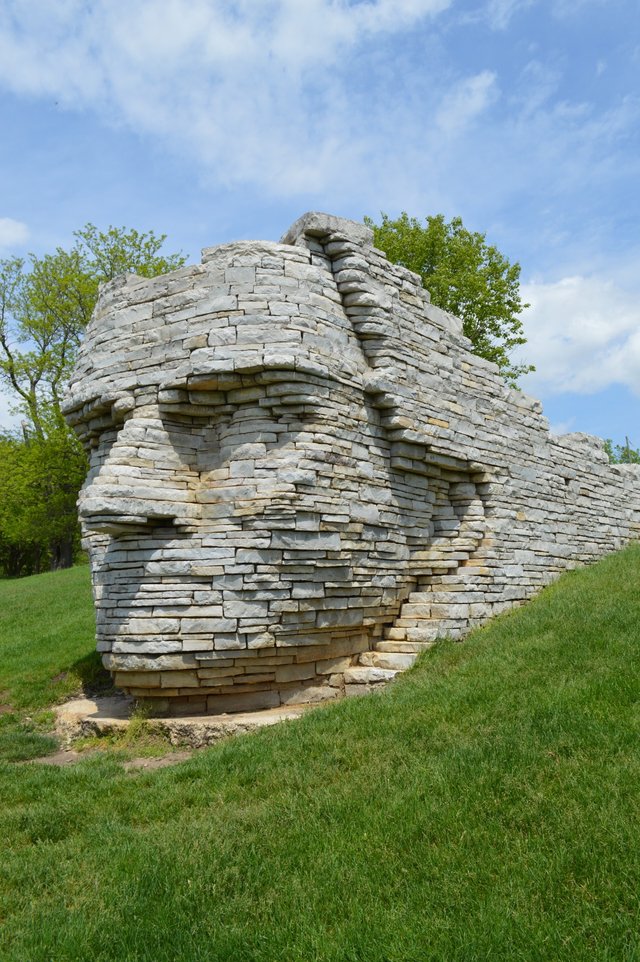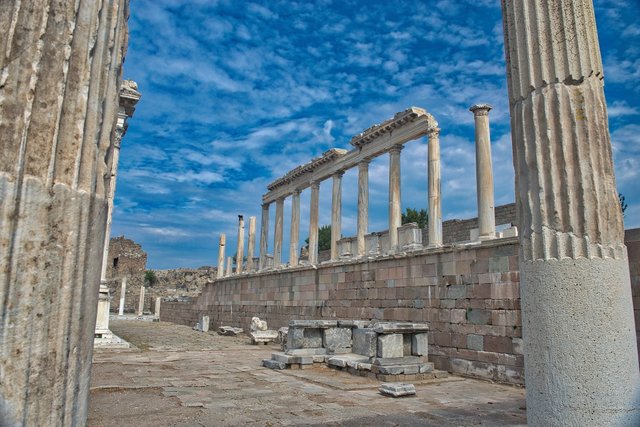The Cosmic Story of Ancient Civilizations
Based on the belief system and culture prevailing in each nation, they then build a suitable cosmic story in order to gain an understanding of their position in the universe and how the evolution of the universe takes place according to their understanding.

The Ancient Egyptian Cosmic Story
Ancient Egyptians associate their cosmology with their natural environment, with Earth, sky, Sun, Moon, stars, and the Nile. The annual flood of the Nile that enriches its delta makes it a very important role and water are one of the key elements in the creation of the Ancient Egyptians.
According to them, the universe was created from a chaotic situation they call Nu or Nun. From this chaotic situation came several hills, from this first hill the first Sunrises, and from here the Sun occupies a very important place in the process of the creation of the world.
The rising sun is named after Khepri, the ladybird and also called Ra-Harakhte who appears as a winged Sun disk, the young Sun visible on the eastern horizon. In the middle of the day, when the sun radiates the heat, he is named Ra who is strong and majestic. While on the western horizon, he was named Atum, the parent, or Horus.
Creation began when Atum, the sun god of the city of Heliopolis, rose from the turmoil of water. Atum creates itself using his mind and will. In this chaotic water, Atum that finds no place to stand and creates a hill which is a life-giving hill, like the hills left by the Nile after the flood receded. The appearance of this first hill can be interpreted as the appearance of light from the dark atmosphere of Nu.
Then he then united with his own shadow and the birth of his two sons, the Shu (men) who spit him out and the Tefnut (woman) who vomited him. It follows that Shu and Tefnut are the regulators of the order of the Egyptian universe. Shu gives the principle of life, and Tefnut gives the principle of order. Shu and Tefnut also became Geb's parents ie Earth and Nut or sky. The Nut that is a goddess is often shown as an ox that stands with the body enclosing the Earth and its eyes are the Sun and the Moon. This ox is propped up by Shu who became the god of air and wind, so as not to fall upon the earth. The sun is born by this heifer every day, moving on a solar ark along an ox belt that is considered a cosmic sea. At dusk, the dewata of the gods swallowed the Sun that gave rise to the darkness of night.
The Cosmic Story of Ancient India
Already thousands of years ago, Indians paid considerable attention to astronomy, especially those associated with astrology. Nevertheless, astronomy in the current sense has also begun to develop. Calculations performed by Indian astronomers like Aryabhata have an accuracy close to the accuracy of modern astronomers' calculations. Book of Rigveda made around
1500-1000 years before Christ already contains verses showing the relationship between the movement of the sun with a tropical one year long.
Indian cosmology that has a long history is characterized by the cyclical pattern it possesses. This cyclical pattern is indicated by a period of one day of Brahma showing the age of the universe. One day and one night Brahma is declared as one Kalpa lasting for 6.22x1014 years, each Kalpa is divided into 1000 "great times", and every great age is divided into 4 ages. After the completion of a Brahma day (which lasted for 3.11x1014 years), the universe was destroyed and its inhabitants met with the Creator and waited for a night of Brahma to be recreated. Interestingly enough, this period in Ancient Indian cosmology is the longest period of time compared to other mythological cosmologies. In the size of the Kalpa, the age of the universe
now accepted is 7 kalpas plus 335 great epochs.
In Hinduism, the main principle underlying their cosmology is the existence of Brahman, which is the fundamental entity of the whole universe. From this Brahman came Purusha or the creator power that created the universe from empty, formless state. Furthermore, the universe evolved to then be destroyed again in an endless cycle of creation-destruction.
The Cosmic Story of the Mayans
Mayan culture that developed in the region of Honduras and Guatemala, Central America since 1200 BC until the end of the 17th century is a culture that is quite advanced. Although archaeological excavations are already underway, there are still many mysteries surrounding this Mayan culture, especially its connection with the Aztec culture of Mexico and its rapid collapse process.
The Maya nation produced remnants that reflected their progress in art, architecture, hieroglyphic writing, mathematics and astronomy. In this field of astronomy, they have developed a very careful calculation of the day.
The story of the creation of the Universe and of the Mayan people is written in the saga of Popol Vuh. In this story is told that at the beginning of heaven and earth are in a state empty, dark, shapeless, and all in a state of chaos. Under the circumstances, the ancestors of Tepeu, the Water; Gucumatz or the Fire, and Juracan, or the Heavenly Hearts come together and agree to form the universe into something more meaningful and orderly.
They then create the light, remove the clouds that embed the Earth, and then create all the plants that become a very dense jungle. This then proceeds with the creation of the animals that inhabit the jungle. Their creation culminates in the creation of man, which does not last forever. First, they make people from clay, but because then humans are dissolved in the water, they make again man from wood. This man was also not perfect because it was then burned in the fire. Later, they made men from maize (tzité), and women of a kind of grass named Espada. Even though they are still not satisfied that they drop a bird named Xecotcovah and a jaguar named Cotzbalam to kill them. Finally, they then create human again, but now equipped with intelligence. They numbered four men, each named Balam Quitzé, Balam Acab, Mahucutah, and Equi Balam. After that, the Ancestors made them sleep and with their powers was created the woman who became the fourth man's partner. They are the ancestors of the Quiche Maya nation.
The Cosmic Story of the Ancient Greeks
At the beginning there is only Khaos (chaos), everything is quiet, empty, dark, and endless. From this chaos arose Night and Erebus. Then came the Love (Eros) which gave an order to the Khaos. From this Love also comes the Light and the Day, and is followed by the appearance of Gaea (Earth).
Erebus then slept with Night, which later gave birth to Aether and Daylight. The night itself gave birth to Plagues, Destiny, Death, Sleep, Dreams, and everything that came from the darkness.
Meanwhile, Gaea himself gave birth to Uranus or the sky, and Uranus later became a couple Gaea, and from this couple was born three Cyclops, three Hecatoncheires, and twelve Titans.
It turns out that Uranus is not a good father. He hates Hecatoncheires and imprisons them in the womb of Gaea. This makes Gaea want to kill Uranus and invite his children to do it together. They all would not, except for the youngest Titan, Cronus.
Cronus with Gaea then manages to persecute Uranus, cut his genitals and throw them into the ocean, and Uranus himself expels them. While walking away, Uranus cursed Titan and Cronus about their future fate. From his grief, he created the Giants, Nymphs, and Erinye, and from the foam of the sea where his genitals fell was created Aphrodite.
Furthermore, the Greek mythological story is colored by the battle of the descendants of Gaea to get the highest position among fellow gods. One thing that is dominant in the Ancient Greek cosmic tale is the awareness of the existence of Fatum (Fate) that can not be avoided by anyone, including the most powerful gods though. For the first time came the idea of a force that governs everything in the universe.
Although these cosmic stories can be said to be fairy tales because they are based only on speculation and mixed with various mythologies, these cosmic stories can provide some sort of human direction and purpose in those days. Humans feel connected to the universe from the lowest level to the highest level, and they greatly respect the universe in which they live as evidenced in the various ceremonies as they re-create the process of the universe's ongoing creation. That is why people in those days felt obliged not to disturb nature because this meant it could be bad for themselves.
Best Regard @h4f
Reference :
Gribbin, J. (1986), In Search of the Big Bang: Quantum Physics and Cosmology, Bantam Books
Griffin, D.R. (ed.) (1988), The Reenchanment of Science: Postmodern Proposals, State University of New York Press
Silk, J. (1988), The Big Bang, W.H. Freeman & Co.
http://hs.plattevalley.k12.co.us/teacher_pages/language_arts/mrs__e_v_a_n_s/egyptian_mythology/
http://zostrianos.blogspot.com/2008/05/egyptian-creation_01.html


